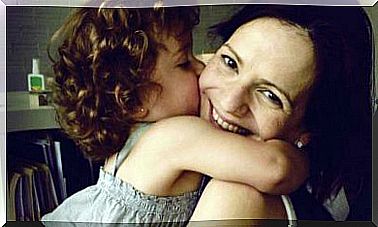How Is Exterogestation Lived?

Exterogestation, however new the concept may sound to us, is a process that mothers and children go through since ancient times. Most of the mothers have had a gestation of eighteen months, it is not that the baby takes so long to be born, but that the period includes an intra and extrauterine gestation, a very necessary stage for the development of the little one.
Human beings absolutely depend on a maternal figure during our first months of life, for this reason experts propose the concept of extrauterine gestation. The vital systems of the baby do not adapt immediately to life outside the uterus, they are immature in many aspects, so the mother accompanies them in different ways at least nine months after delivery.
What is exterogestation?
To better understand what external gestation or exterogestation means, we can start by imagining the fragility of the newborn, it is not capable of defending itself and continues to need a lot of attention. Both protection, heat and food are elements that the baby cannot miss in its first days, but it is something that he cannot produce on his own.
The survival of the child during the nine months after birth is identified as a period of extrauterine gestation, at this stage the child finishes developing through the goalkeeper, co-sleeping, breastfeeding and greater skin-to-skin contact with their parents. It is understood that exterogestation is activated as a transformation process that the baby requires to adapt to its new life.
Mothers experience extrauterine development during the months following pregnancy as if they were still pregnant. According to experts, in fact the pregnancy is maintained outside the uterus, since this time must elapse for everything to return to normal. In this sense, exterogestation implies a relationship that regulates the baby’s immature systems during the first months of life.

Exterogestation completes the months that are needed
Compared to some animals, for example apes, the gestation time of humans is still very short. According to the hypothesis of the experts, the progressive changes in the man have determined that the gestation period is shortened. In this sense, those animals whose intrauterine life is longer are born with a higher degree of maturity.
The vital systems of a newborn ape have matured twice as much as that of a human, despite being born just two weeks later. That is why man requires additional time for accommodation, growth and maturation. We can talk that after one year of birth, the baby has only managed to develop a third of its brain and we do not even imagine that they can defend themselves.
At birth, it is essential that the baby’s brain be nourished by experiences and contact with other humans. It is estimated that touch is the main protagonist in this stage, for this reason it becomes essential that the child is carried in the arms and connects with other elements through breastfeeding.
Experts say that this interaction during the nine-month extrauterine development leads to the strengthening of the respiratory, cardiac and sensory systems. In this period, the baby can barely adapt through the sense of touch, but thanks to the permanent contact with the skin of his parents, he gains the confidence necessary to sharpen other senses such as sight and hearing.

The newborn comes into the world with the lungs and heart developed enough to continue life outside the womb, however, his brain is not mature until after the year. In this sense, most of man’s brain development occurs during exterogestation, the increase in connections continues until adulthood, but the first years are essential.
Thus, the second nine months of gestation provide the vital sustenance to allow extrauterine development. Until the baby is able to interact with the environment, move around and connect as many neurons as possible, neither the mother nor the child will have fully completed “gestation”; later on, there is a necessary separation that allows the generation of autonomy.









